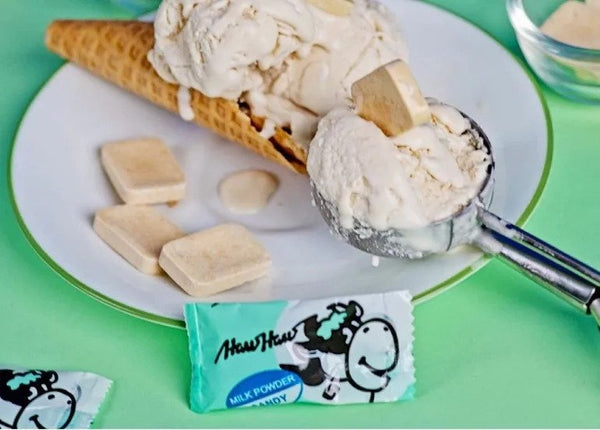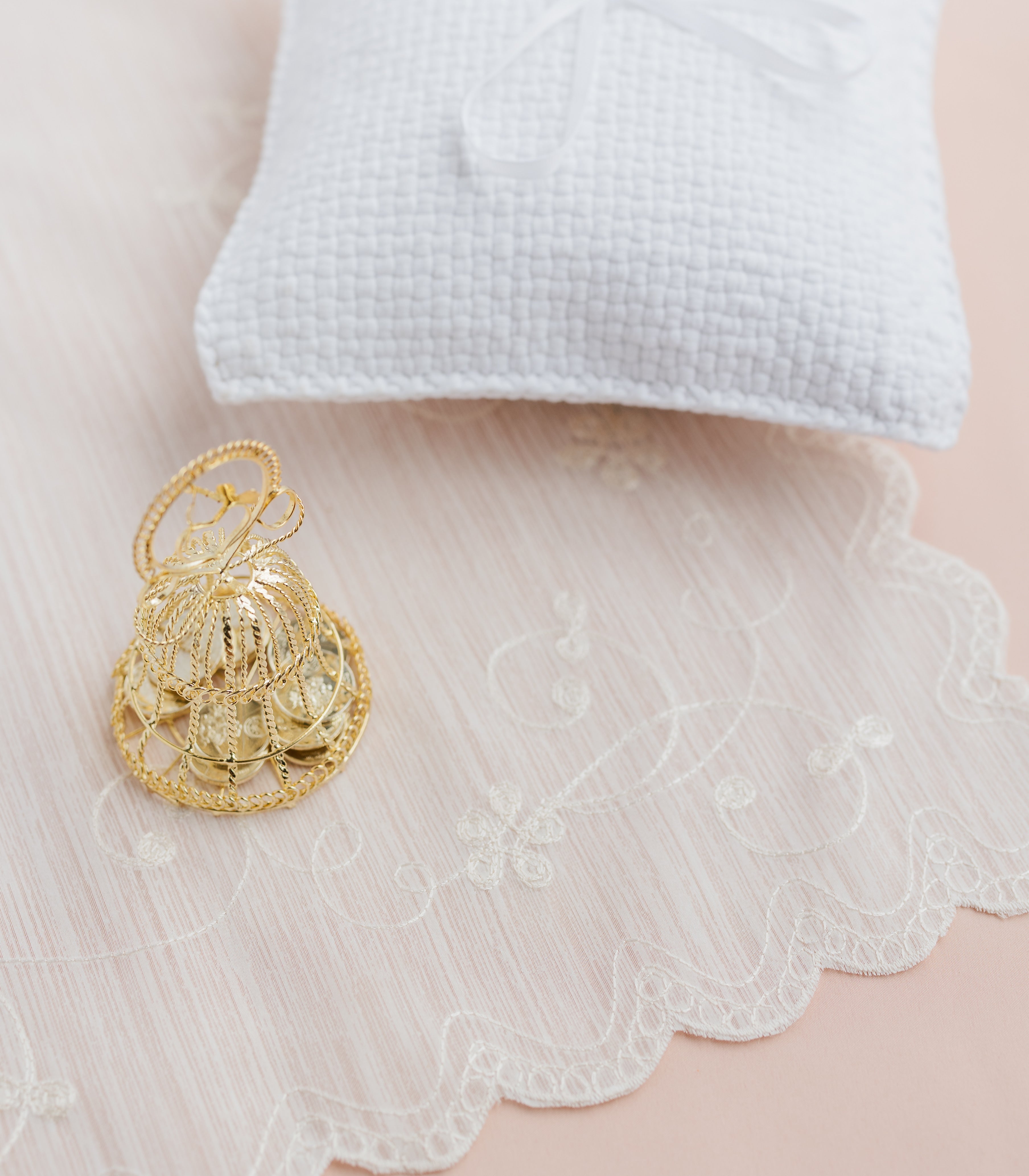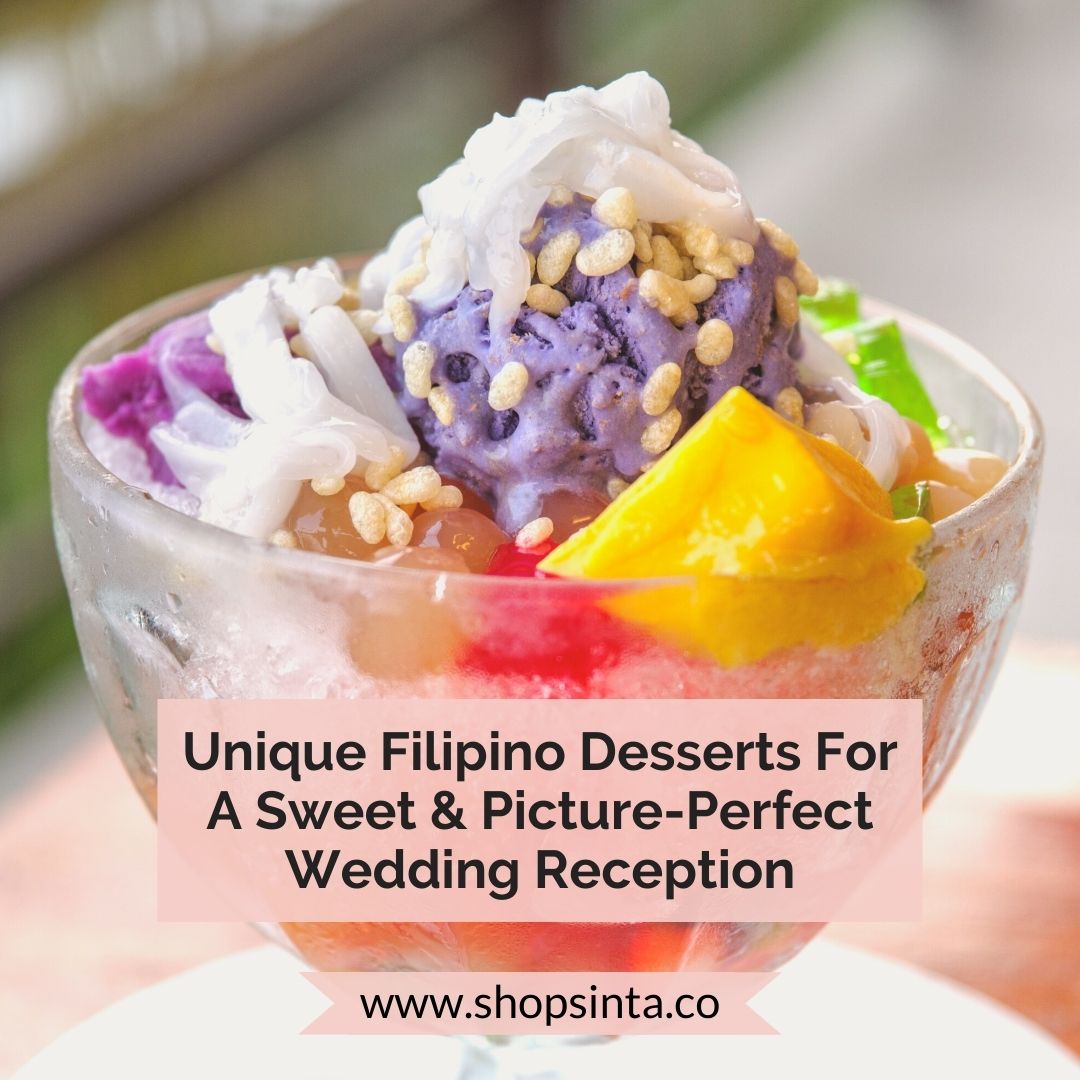Any Filipino party is incomplete without good food, especially unique Filipino desserts. Sweet dishes in Filipino culture are vastly underexplored and overshadowed by its savory counterparts: rich and aromatic adobo, crispy yet succulent lechon, or even the notorious balut.
For centuries, Filipinos have satisfied their sweet tooths with produce that abounds in our fertile archipelago. Ingredients like sugarcane and coconuts are creatively combined with rice, cassava, and other starchy staples. Bananas, pineapples, and mangoes inspire refreshing treats while pandan, also known as “Asian vanilla”, flavors creamier desserts.
Our rich culinary traditions have adapted throughout history and continue to evolve through the creative talents of Filipino cooks worldwide.
In other words, Filipino food is exciting. Moreso Filipino desserts!
We often describe Filipino cuisine as homey and comforting—which is true. But we also associate it with no-nonsense presentation, when in fact, Filipino desserts portray quite the opposite.
With mainstays such as ube halaya (purple yam jam) and halo-halo (shaved ice), Filipino desserts are quite well-known for their vivid colors and appetizing presentations.
There’s a special thrill in seeing an entire bilao (woven tray) piled with rainbow-colored rice cakes.
If you grew up eating Filipino food, serving familiar dishes and desserts at your wedding can be a personal way to honor your family and loved ones. If you’re only now starting to reconnect with your heritage, a menu inspired by the homeland is a fun way to dig in (pun intended).
Either way, Filipino desserts invite us to add a touch of beauty to the wedding table and give guests a feast to remember.
We’ve compiled eight unique Filipino desserts to sweeten your nuptials in a deliciously picture-perfect way.
Kakanin: Unique Filipino Desserts Made With Rice
Filipino cuisine is largely centered on rice. There’s a whole vocabulary in Tagalog for rice in its various forms: palay (unmilled), bigas (milled), kanin (steamed), and so on.
It’s no wonder that many Filipino desserts prominently feature rice to the extent of becoming its own category: kakanin.
1. Bibingka

Traditionally served during the Christmas holidays, usually near churches, bibingka is a cake made of galapong (fermented rice dough) and salted egg. It is baked in a clay pot, lined with banana leaves, over hot coals then topped with margarine, cheese, and grated coconut.
Bibingka is both fluffy and filling with a subtle balance of sweet, salty, and smokey flavors that pair well with a sip of rich tsokolate (hot cocoa). In its traditional form, it’d be a perfect dessert to warm up an evening reception.

Christina de los Reyes, the baker-writer-photographer behind the food blog “Egg Marks The Spot”, suggests an elegant Bibingka Naked Cake for those planning a micro-wedding. For a sophisticated-looking dessert, it’s quite simple to DIY: ready-to-bake bibingka mix.
Decorate with a thin layer of coconut frosting and lots of edible flowers, and you’ve got a delightful centerpiece to an intimate gathering.
2. Suman

Likely one of the first things Filipinos think about in the category of kakanin, suman is a roll of glutinous rice wrapped in banana leaves. Whereas bibingka is fluffy like a sponge cake, suman is dense and chewy.
Depending on where you are in the Philippines, suman has different variations and is sweetened in various ways. For example, one can serve it with muscovado (unrefined cane sugar) or with latik (coconut milk reduction). If you’re serving it as a snack, go with the former.

Want to wow your guests even more? You can take inspiration from a truly decadent version of this dessert called “Fried Suman, Mangga (Mango), and Choc Nut” created by Neil’s Kitchen, a family-style Filipino restaurant in Manila.
This modern and whimsical take on the classic features deep-fried suman. Layered on top is a block of mango jelly made from scratch using puréed mango. To top it all off is a sprinkling of a beloved Filipino candy called Choc Nut, a crumbly mix of ground peanuts, cocoa, milk, and sugar.
For a touch more of whimsy and color, decorate with a paper umbrella or other fun tropical garnishes.
3. Sapin-Sapin

You can’t talk about kakanin without mentioning the beautiful sapin-sapin, which roughly means “to layer” in Filipino. It’s a dessert made of glutinous rice flour, coconut milk, sugar, and often topped with toasted coconut flakes.
Sapin-sapin brings an instant boost of color and joy to any dessert spread. More so when you bite into it: silky soft with a little chew and gentle flavors all throughout.
One can simply make use of food coloring to achieve this pretty-looking presentation. Often you’ll see sapin-sapin with purple, yellow or orange, red, and white layers. You can also use ingredients, such as ube halaya, langka (jackfruit), and so on, to color and flavor to each layer.

Want the layers of the sapin-sapin presented a different way? Do it like Filipino food vlogger “So Charrrap” does with their unique sapin-sapin rolls.
Cook each layer of rice cake separately in a pan before layering and rolling them all together. Then coat the sapin-sapin with toasted sesame seeds and cut into neat slices to fully enjoy the spiral! Another perk is, for a buffet-style reception, it’ll be easier for guests to put onto their plates.
Palamig: Unique Filipino Desserts To Cool Down The Crowd
Living in a tropical country, Filipinos often look to their frozen desserts for respite from the hot and humid weather.
4. Halo-Halo

On a sweltering summer day, halo-halo is a must-have. Literally translating to “mix, mix” in Filipino, this iconic dessert is made with a base of crushed ice and sweetened milk, combined with a wide range of ingredients.
Depending on what you like, halo-halo can include shredded fresh coconut, sweetened red and white beans, ube halaya, langka (jackfruit), sweetened bananas, and coconut jelly. The toppings of choice would be a generous serving of leche flan, crispy pinipig (pounded young rice), and for those feeling extra special, several scoops of ice cream.

Some halo-halo purists might implore you to stick within those ingredients (after all, there’s so much to choose from already). But if you want to serve something a little different, we encourage you to experiment with other familiar Filipino flavors.
The Strawberry Pineapple Halo-Halo by Momma Cuisine is definitely worth trying. You can have it as a refreshing alternative if some traditional ingredients are hard to find and out of season!
5. Sorbetes

Not to be confused with sorbet, sorbetes is Filipino ice cream. This dessert is commonly sold by a “Mamang Sorbetero” from his street cart that he wheels along and announces with a ring of his bell.
Originally, sorbetes was made with carabao milk, but nowadays you’ll likely taste coconut or dairy milk.
The sweet scoops are served in small wafer cones or pandesal. Common flavors include ube, keso (cheese), strawberry, and buko pandan.

An out-of-the-box way to serve sorbetes would be to combine it with flavors not commonly found in sorbetes carts in the homeland.
Mom’s Sorbetes in Manila, for instance, concocts unique variants like Potchi (strawberry gummy candy), Haw-Haw (a milk candy that melts in your mouth), and even Yakult (the iconic probiotic drink sold in the Philippines and the rest of Asia).
These familiar flavors will definitely surprise your guests yet bring them back to childhood.
ATBP. (At Iba Pa): Other Unique Filipino Desserts
Beyond rice-based and frozen desserts, Filipinos also have a love of other sweets, including the wildly popular ube halaya which you’ll notice is a common ingredient and component to other dishes. There are also breakfast and snack favorites, such as turon and taho, which can serve as dessert.
6. Ube Halaya

Added to ice cream, cakes, pastries, or simply served on its own, ube, a type of purple yam, has proven to be a favorite among Filipinos worldwide with its distinctive color and sweet, slightly nutty, vanilla-like taste.
Ube’s most popular form is halaya, a traditional jam, made by mashing and mixing with butter, evaporated and condensed milk, and sugar.

If you’re looking to impress your guests with a pastry they most likely haven’t seen before, Love and Olive Oil has an excellent recipe for Ube and Coconut Cream Pie, which uses store-bought ube jam perfect for wedding chefs who might not have the time to make ube halaya from scratch.
7. Turon

Think of it like lumpia (spring rolls) if it were a dessert. Turon is a banana, sometimes with the addition of jackfruit, rolled in a flour wrapper and deep-fried to golden perfection.
It’s often eaten as an afternoon snack and also goes perfectly with a scoop of ice cream. Coconut or vanilla, perhaps?
Turon would be a humble treat to serve at a wedding, but it sparks a sentimental and nostalgic feeling in those who grew up in a Filipino household. Rolling turon and lumpia with family around the table is a memory many Pinoys cherish.

Turon can be a heavy dessert, which is why we also recommend serving them in bite-sized pieces for guests.
On Reddit, user “macEnJill” reinvented turon into a fancy dessert by using Swiss buttercream, caramelized plantains, jackfruit, and crushed lumpia wrappers. Not what you would expect from turon or macarons!
8. Taho

The call of the magtataho, “Tahooooo!”, is one of the most common sounds in any neighborhood in the Philippines, early in the morning. People hurry outside to catch manong before he passes by and buy this breakfast-snack-and-dessert treat.
Taho is often served in a paper or plastic cup. Or when those are too small, people supply their own cups or bowls.
Taho is a simple yet delightful mix of silken tofu, arnibal (caramelized sugar syrup), and sago pearls, and is sold by street vendors in almost every corner of the country. It can be eaten either piping hot or chilled.
If it’s a warm day, and you want your guests to cool down we recommend this sundae-like take on taho by Kariton Sorbetes, a Melbourne-based vegan ice cream shop.
It’s definitely not your typical taho as it smoothened the silken tofu one step further into a soft serve. The sundae adds taho in another form with creamy soy milk panacotta, a smattering of boba pearls, and a drizzle of oolong-infused syrup.
To give it a uniquely Filipino twist, you may want to switch out the soft serve for scoops of sorbetes instead, along with a generous drizzling of arnibal syrup.
Tips & Ideas When Serving These Unique Filipino Desserts To Your Wedding Guests
1. Get creative with Filipino ingredients and use them in other kinds of desserts!
For instance, desserts such as ube macarons and calamansi sorbet have become popular in Filipino weddings in recent years. You can be inspired by Filipino traditions and make them your own!
2. Keep in mind your guests’ specific dietary requirements to serve options: vegan, gluten-free, kosher, halal, or so on.
Desserts like bibingka call for animal products such as salted egg and pork lard (in particularly one variety called salukara) when prepared traditionally. You might want to ask your caterer for a plant-based version. Or, if you’re sticking to authentic recipes, make sure to have any alternative options on the table for guests.
Fortunately, Filipino cuisine naturally makes use of rice and coconut milk in a lot of its recipes! So it won’t be too hard to create a dairy-free and gluten-free menu for your guests.
3. Present your desserts in exciting and interactive ways.

A Filipino ice cream, aka sorbetes, served up the traditional way: from a cart! (Source: Mamang Sorbetero by Crystalyn)
Filipino desserts are innately colorful, which opens up ideas for unconventional wedding presentations. Some ideas that you can include in the reception are a make-your-own halo-halo buffet; sorbetes served in an authentic cart; and, kakanin neatly arranged on banana leaves in a bilao!
4. Create a memorable experience through games.
Make the party more fun by having games with different sweet treats as prizes. This can include the pabitin, a popular children’s party game where party favors are tied onto bamboo sticks and lowered down for the players to grab as many prizes as they can.
Another idea could be to give Filipino candies and snacks (like Choc Nut or pastillas) as a memorable wedding favor. Guests will definitely be excited to bring these beloved treats home.
Apart from the already iconic dishes such as lechon, lumpia, and adobo, desserts are another way for you to incorporate and showcase Filipino culture at your wedding, allowing you to introduce your guests to a different side of your culinary traditions.
It doesn’t hurt that these desserts are just so pretty to look at too.
Are you excited to have a feast of unique Filipino desserts at your own wedding?
Discover quality caterers in our Wedding Vendor Directory! You’ll also find Filipiniana designers, planners, and more to plan the wedding of your dreams.Lawrence Garcia

Lawrence is a writer and digital creative from Manila, who's passionate about advertising, books, and fashion history. While working on getting certified as a digital marketer, he's usually binge-watching Heartland and RuPaul's Drag Race on Netflix. You can get in touch with him via email at rencegarcia95@gmail.com



Leave a comment